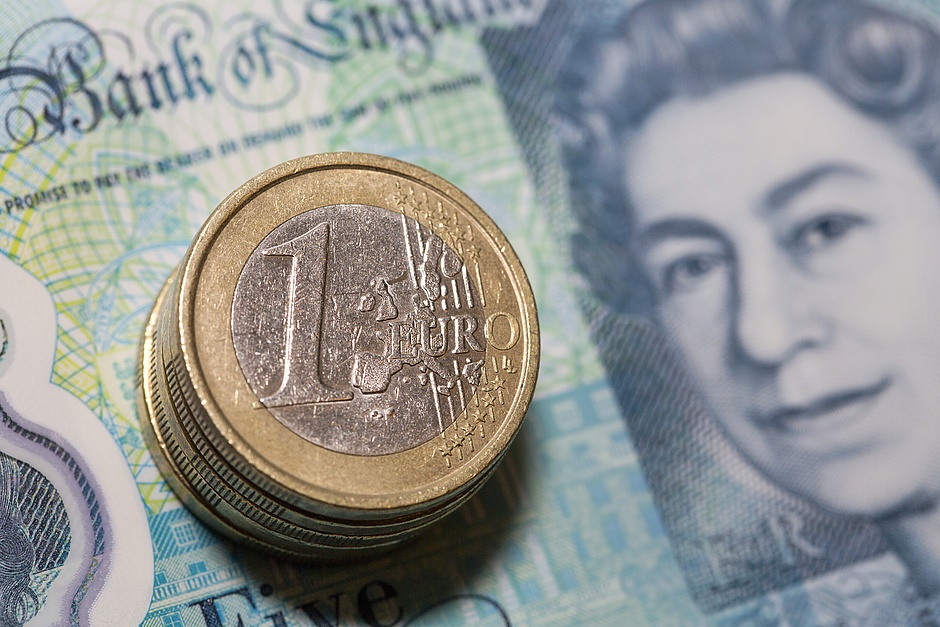EUR/GBP stays vulnerable below 0.8300 as French government sets to dissolve
- EUR/GBP remains on tenterhooks below 0.8500 as traders brace for high volatility ahead of French no-confidence vote.
- Traders see ECB interest rates heading to 1.75% by the end of 2025.
- BoE Bailey said he sees four interest rate cuts next year.

The EUR/GBP pair ticks lower and sustains below the cruical resistance of 0.8300 in Wednesday’s North American session. The asset is expected to remain highly volatile with investors focusing on French no-confidence vote that is expected to result in a collapse of Prime Minister Michel Barnier’s government.
Marine Le Pen-led-Far Right allied with Left wing and proposed a non-confidence motion after claiming budget from Barnier’s government as “flawed and harmful” for French people. The budget in question proposed €60 billion in tax increases and spending cuts aimed at addressing France’s ballooning deficit, according to Firstpost.
Market participants worry that the impact of burgeoning defict will widen as a new election is not allowed until Summer.
Apart from French political crisis, growing expectations of more interest rate cuts from the European Central Bank (ECB) are also weighing on the Euro (EUR). The ECB is expected to cut push its Deposit Facility Rate lower to 1.75% by the end of 2025. For the policy meeting on December 12, ECB policymaker and Governor of Austrian Central Bank Robert Holzmann supported 25 basis points (bps) interest rate cut to 3%, indicated in an interview on Tuesday. “As the data currently stands, I think a reduction of 0.25 percentage points is conceivable, not more,” Holzmann said.
Meanwhile, the Pound Sterling (GBP) remains firm against a majority of its peers even though Bank of England (BoE) Governor Andrew Bailey predicted four interest rate cuts in 2025, said in an interview with the Financial Times (FT) in Wednesday’s European session. Bailey didn’t offer any cues about likley interest rate action in the meeting on December 19 but traders expect the BoE to leave policy rates unchanhed at 4.75%.
Euro FAQs
The Euro is the currency for the 19 European Union countries that belong to the Eurozone. It is the second most heavily traded currency in the world behind the US Dollar. In 2022, it accounted for 31% of all foreign exchange transactions, with an average daily turnover of over $2.2 trillion a day. EUR/USD is the most heavily traded currency pair in the world, accounting for an estimated 30% off all transactions, followed by EUR/JPY (4%), EUR/GBP (3%) and EUR/AUD (2%).
The European Central Bank (ECB) in Frankfurt, Germany, is the reserve bank for the Eurozone. The ECB sets interest rates and manages monetary policy. The ECB’s primary mandate is to maintain price stability, which means either controlling inflation or stimulating growth. Its primary tool is the raising or lowering of interest rates. Relatively high interest rates – or the expectation of higher rates – will usually benefit the Euro and vice versa. The ECB Governing Council makes monetary policy decisions at meetings held eight times a year. Decisions are made by heads of the Eurozone national banks and six permanent members, including the President of the ECB, Christine Lagarde.
Eurozone inflation data, measured by the Harmonized Index of Consumer Prices (HICP), is an important econometric for the Euro. If inflation rises more than expected, especially if above the ECB’s 2% target, it obliges the ECB to raise interest rates to bring it back under control. Relatively high interest rates compared to its counterparts will usually benefit the Euro, as it makes the region more attractive as a place for global investors to park their money.
Data releases gauge the health of the economy and can impact on the Euro. Indicators such as GDP, Manufacturing and Services PMIs, employment, and consumer sentiment surveys can all influence the direction of the single currency. A strong economy is good for the Euro. Not only does it attract more foreign investment but it may encourage the ECB to put up interest rates, which will directly strengthen the Euro. Otherwise, if economic data is weak, the Euro is likely to fall. Economic data for the four largest economies in the euro area (Germany, France, Italy and Spain) are especially significant, as they account for 75% of the Eurozone’s economy.
Another significant data release for the Euro is the Trade Balance. This indicator measures the difference between what a country earns from its exports and what it spends on imports over a given period. If a country produces highly sought after exports then its currency will gain in value purely from the extra demand created from foreign buyers seeking to purchase these goods. Therefore, a positive net Trade Balance strengthens a currency and vice versa for a negative balance.
Author

Sagar Dua
FXStreet
Sagar Dua is associated with the financial markets from his college days. Along with pursuing post-graduation in Commerce in 2014, he started his markets training with chart analysis.

















